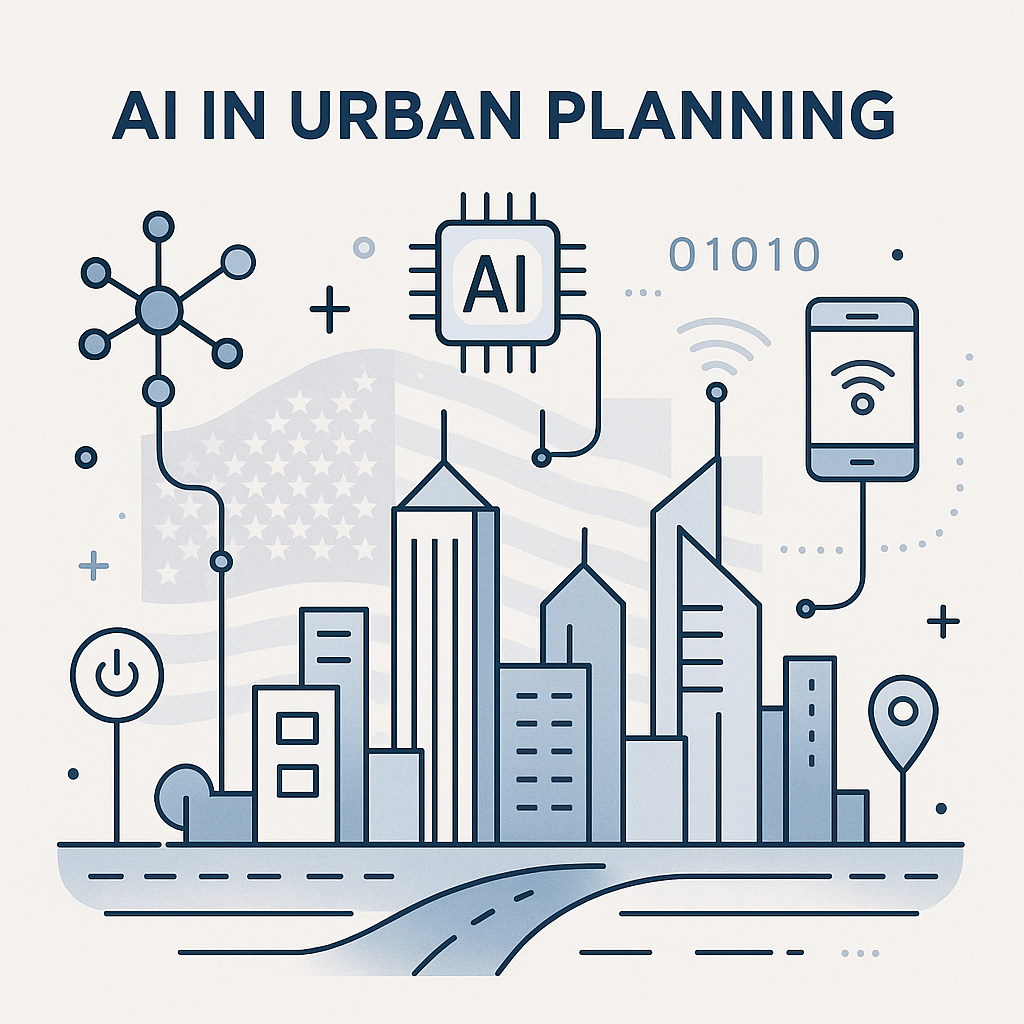
AI in Urban Planning: Transforming American Cities in 2025
Urban planning in the United States is undergoing a revolution, thanks to the rapid advancements in artificial intelligence (AI). From optimizing traffic flows to predicting population growth, AI in urban planning is reshaping how cities are designed, managed, and experienced. In this comprehensive guide, we’ll explore how AI is driving smarter, more sustainable urban environments across the U.S. in 2025.
What Is AI in Urban Planning? Understanding the Basics
Artificial intelligence in urban planning refers to the use of advanced algorithms, machine learning, and data analytics to support decision-making in city development and management. By leveraging vast datasets—from satellite imagery to real-time sensor feeds—AI helps planners and policymakers create more efficient, livable, and resilient urban spaces.
Key Components of AI in Urban Planning
- Data Collection: Gathering information from IoT devices, public records, and citizen feedback.
- Predictive Analytics: Forecasting trends in population, traffic, and resource usage.
- Simulation Modeling: Testing urban design scenarios before implementation.
- Automation: Streamlining repetitive tasks like permit processing and zoning analysis.
TIP: 🏙️ AI doesn’t replace urban planners—it empowers them with better tools for smarter decisions.
Top 10 Applications of AI in Urban Planning (2025)
AI is already making a tangible impact on American cities. Here are the top 10 ways AI is being used in urban planning today:
- Traffic Flow Optimization
- Smart Infrastructure Maintenance
- Predictive Urban Growth Modeling
- Environmental Monitoring and Sustainability
- Disaster Response and Resilience Planning
- Affordable Housing Analysis
- Public Safety and Crime Prediction
- Energy Consumption Forecasting
- Citizen Engagement Platforms
- Automated Zoning and Permitting
Side-by-Side Comparison Table: AI Applications in Urban Planning
| Rank | Application | Main Benefit | Example Use Case (2025) |
|---|---|---|---|
| 1 | Traffic Flow Optimization | Reduces congestion, emissions | AI-controlled traffic lights |
| 2 | Smart Infrastructure Maintenance | Prevents costly breakdowns | Predictive bridge inspections |
| 3 | Predictive Urban Growth Modeling | Informs zoning, resource allocation | Anticipating new housing needs |
| 4 | Environmental Monitoring | Supports sustainability goals | AI-analyzed air quality sensors |
| 5 | Disaster Response Planning | Improves emergency preparedness | AI-driven evacuation routes |
| 6 | Affordable Housing Analysis | Identifies housing gaps | AI mapping of rental affordability |
| 7 | Public Safety and Crime Prediction | Enhances community safety | Predictive policing algorithms |
| 8 | Energy Consumption Forecasting | Optimizes grid management | AI-based demand prediction |
| 9 | Citizen Engagement Platforms | Increases public participation | AI chatbots for city feedback |
| 10 | Automated Zoning and Permitting | Speeds up approvals | AI-reviewed building applications |
How AI Improves Urban Planning in the U.S.
Smarter Traffic Management
AI-powered traffic systems analyze real-time data from cameras and sensors to adjust signal timings, reroute vehicles, and reduce congestion. In 2025, cities like Los Angeles and New York are using AI to cut average commute times by up to 20%.
Sustainable Urban Development
AI helps planners evaluate the environmental impact of new developments, optimize green spaces, and monitor air and water quality. This leads to healthier, more sustainable cities.
Enhanced Public Safety
Predictive analytics identify crime hotspots and optimize police patrols, making neighborhoods safer. AI also supports disaster response by modeling evacuation scenarios and resource deployment.
Efficient Resource Allocation
By forecasting population growth and infrastructure needs, AI ensures that investments in roads, schools, and utilities are made where they’re needed most.
TIP: 📦 Integrating AI with existing city data systems maximizes its effectiveness and ROI.
Challenges and Considerations for AI in Urban Planning
While AI offers tremendous benefits, it also presents challenges:
- Data Privacy: Protecting sensitive information from misuse.
- Bias in Algorithms: Ensuring AI decisions are fair and equitable.
- Integration with Legacy Systems: Upgrading old infrastructure to support new technologies.
- Public Trust: Building confidence in AI-driven decisions.
TIP: ✅ Transparent AI models and community engagement are key to successful adoption.
The Future of AI in Urban Planning: Trends for 2025 and Beyond
Looking ahead, AI will continue to evolve and expand its role in urban planning. Key trends include:
- Digital Twins: Creating virtual replicas of cities for real-time simulation and planning.
- AI-Driven Public Participation: Using natural language processing to analyze citizen input at scale.
- Climate Resilience Modeling: Predicting and mitigating the impacts of climate change on urban areas.
- Autonomous Mobility Integration: Planning for self-driving vehicles and smart public transit.
Conclusion: AI in Urban Planning Is Shaping the Cities of Tomorrow
AI in urban planning is no longer a futuristic concept—it’s a present-day reality transforming American cities in 2025. By harnessing the power of data, machine learning, and automation, urban planners are creating smarter, safer, and more sustainable communities. While challenges remain, the benefits of AI-driven urban planning are clear: reduced congestion, improved public safety, better resource allocation, and greater citizen engagement. As technology continues to advance, AI will play an even more central role in shaping the vibrant, resilient cities of the future.